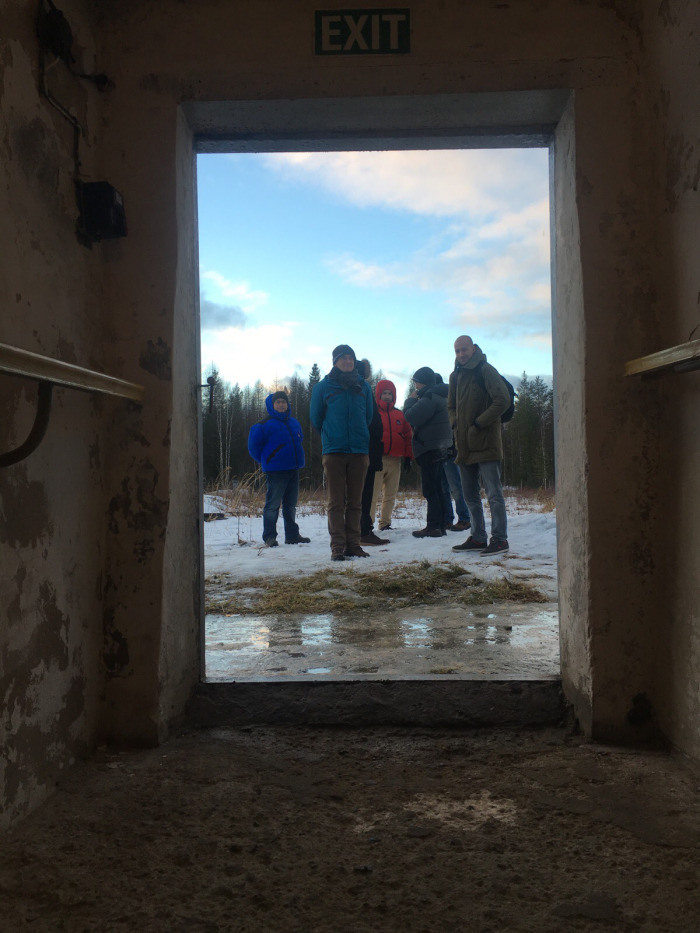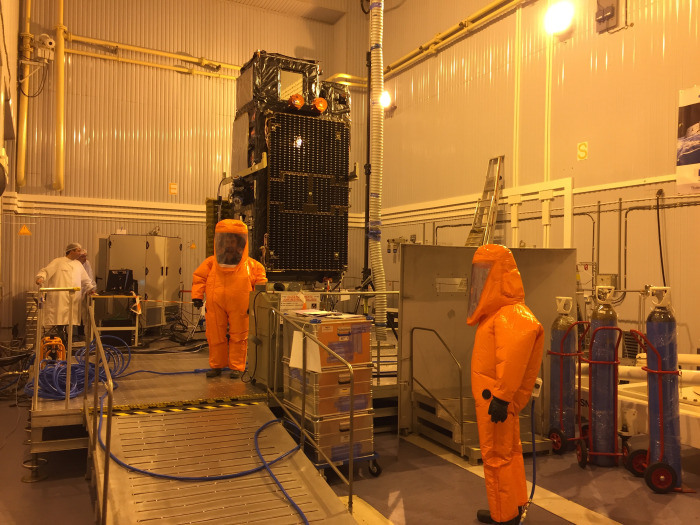Fortunately, the weather has now turned colder here and the rain has finally stopped. Friday was really wet and icy – all the roads and footpaths were extremely slippery. In fact, on our way to the MIK even one of the buses slipped off the road and got stuck in the mud when it was trying to make space for a big lorry to pass.
Despite Friday’s weather we managed to carry on with our activities at the launch pad and moved all the test equipment to the ‘under table’ room, which is the bunker under the launch pad. It took about three hours to get this done and we are ready to do the ‘umbilical check-out’ at the launch pad on Monday.
In parallel, testing continued at full speed with detailed checks on the S-band communication system, the X-band communication system and on the Synthetic Aperture Radar Altimeter (SRAL)
The propulsion team prepared for the fuelling activities with a dry run and check on their protective suits.
The Rockot booster was rolled out and installed in the launch tower. The fairing was assembled on top of Breeze, the stack is ready to be rolled out on Monday for the dry run on the launch pad!
Today (Saturday 12 December), preparations continued on the launcher side with the upper stage and the Breeze so that they can have their electrics checked at the launch pad.
We have been continuing testing the satellite. For example, we measured the battery voltage and confirmed that it was in good health after being transported. Also, the full inspection of the solar array didn’t reveal any problems with the solar cells. The reaction wheels are also in good health with the tests being in full agreement with the last measurements carried out in Cannes, France.
Testing has also been completed on the Sea and Land Surface Temperature Radiometer (SLSTR) and science data are under review. Only the DORIS instrument remains to be tested in one configuration to complete the overall payload testing verification. This will be done on Monday morning.
Last but not least, the Payload Data Handling Unit (PDHT) full functional test where all the payload units are all in operational mode also went as planned.
So, Thales Alenia Space France is well on track for completing the ‘stand-alone test phase’ by this Wednesday.
From ESA’s Sentinel-3 launch campaign team in Plesetsk, Russia.



Discussion: no comments